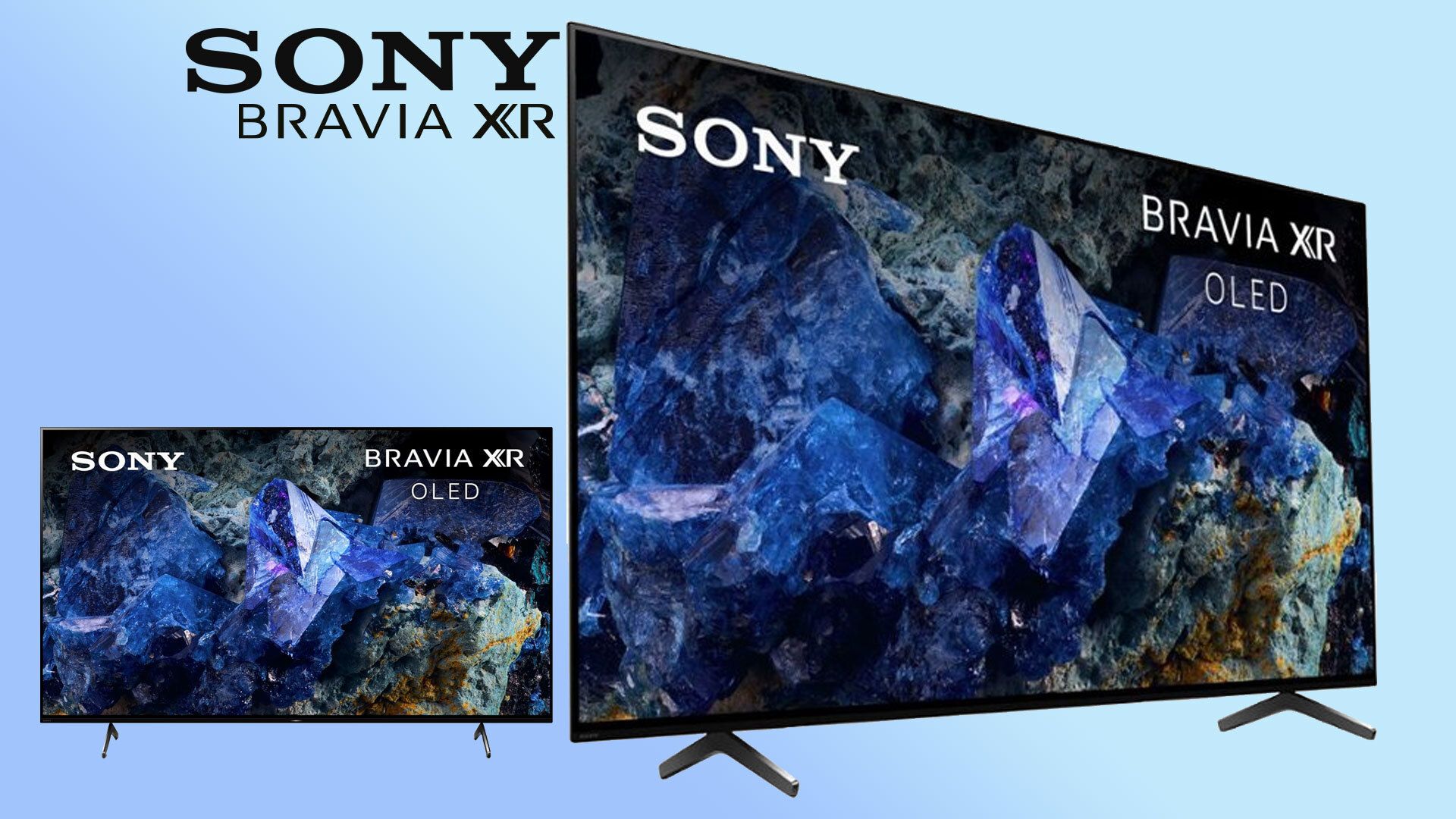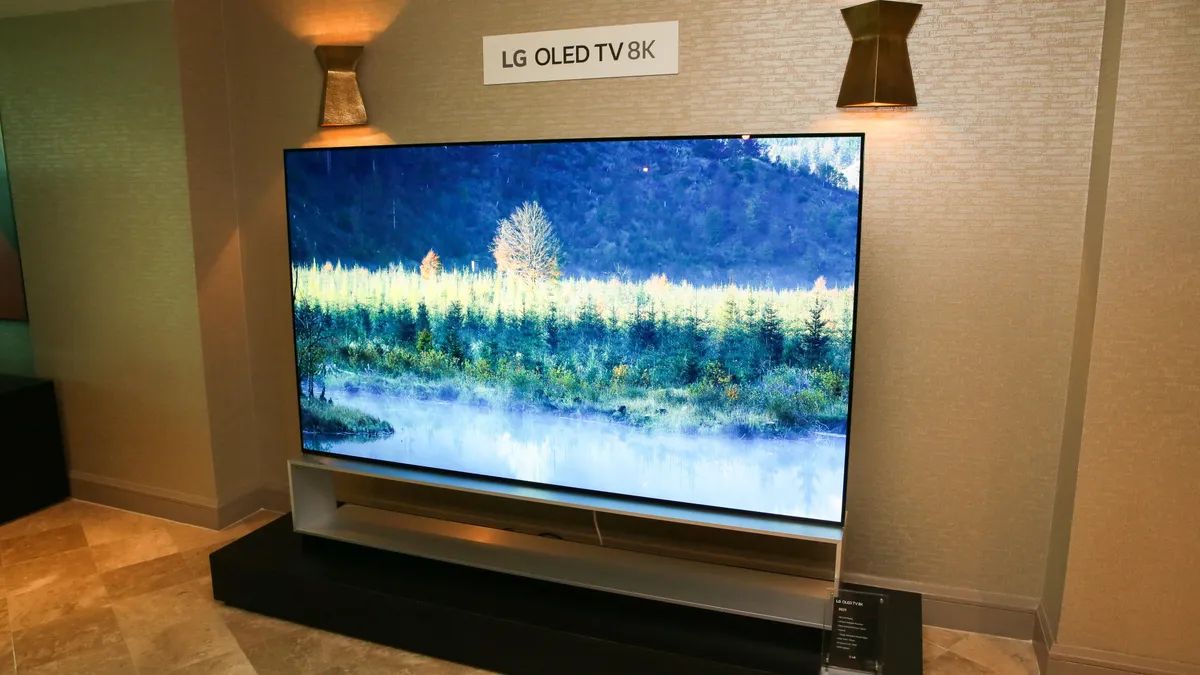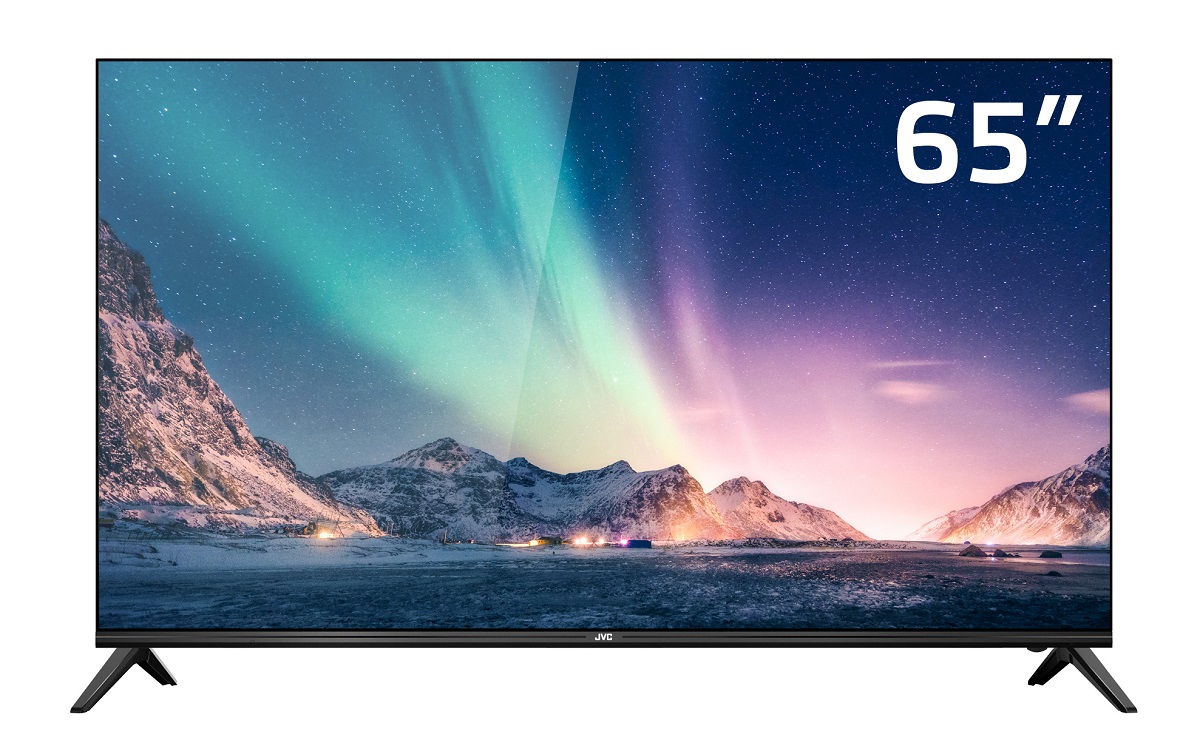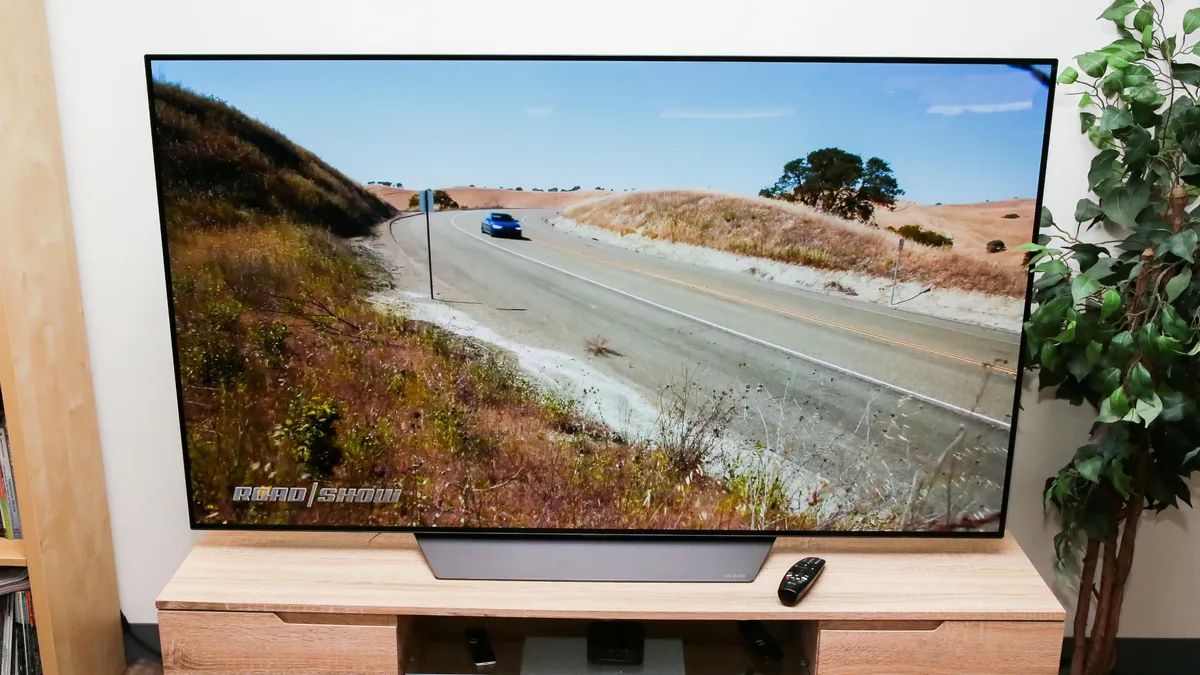Introduction
When it comes to purchasing a new television, it’s no secret that price is a major factor in the decision-making process. While there are plenty of options available on the market, OLED TVs have emerged as one of the most sought-after choices for their superior picture quality and stunning visual experience. However, the inevitable question that arises is when will OLED TV prices drop to Black Friday levels?
OLED, short for Organic Light-Emitting Diode, is a groundbreaking technology that offers a level of image quality and color accuracy that traditional LED and LCD screens simply cannot match. Each pixel in an OLED TV is self-emitting, which means it can individually turn on or off, resulting in true blacks, vibrant colors, and infinite contrast ratios.
The advantages of OLED televisions are undeniable. With their exceptional picture quality, OLED screens deliver incredibly sharp images that captivate viewers with breathtaking clarity and vividness. This technology also provides wider viewing angles, allowing everyone in the room to enjoy the content without any color degradation or loss of detail.
However, there is a catch – the price. OLED TVs have historically been on the expensive side, making them a luxury that only the most dedicated enthusiasts or those with deep pockets could afford. The premium nature of OLED technology, limited manufacturing capacity, and high production costs are all contributing factors to the steep price tags.
While OLED TV prices have gradually been decreasing over the years, reaching a level of affordability for a wider range of consumers, many still eagerly wait for the day when they can purchase an OLED TV at Black Friday prices.
Several factors impact OLED TV prices. The first is the scale of production. As OLED technology becomes more widely adopted, manufacturers are able to achieve economies of scale, leading to decreased production costs. Additionally, competition among manufacturers plays a significant role in price reductions as they strive to capture market share.
Another crucial factor is technological advancements. As OLED technology evolves, manufacturers can develop more efficient manufacturing processes and find ways to reduce costs without compromising on quality. This progress is essential in making OLED TVs more affordable for mainstream consumers.
So, when can we expect OLED TV prices to drop to Black Friday levels? While it’s challenging to predict an exact timeframe, industry experts anticipate that it may happen within the next couple of years. As OLED technology continues to mature, prices are expected to gradually decline, bringing this premium television technology within reach for more consumers.
What is OLED?
OLED, or Organic Light-Emitting Diode, is a cutting-edge display technology that has revolutionized the television industry. Unlike traditional LED and LCD screens, OLED TVs have pixels that emit their own light individually, resulting in unparalleled picture quality and contrast ratios.
At the heart of OLED technology are organic compounds that emit light when an electric current is applied. These compounds are placed between two layers of electrodes, and when a voltage is applied, they produce light. The key benefit of this design is that each individual pixel can be turned on or off independently, creating perfect blacks, vibrant colors, and infinite contrast.
The individual pixels in an OLED display emit their own light, meaning that there is no need for a backlight like in LCD screens. This eliminates the issue of backlight bleeding, where light from one area of the screen spills into another, causing a loss of contrast and washed-out colors. With OLED, each pixel can be precisely controlled to create stunning detail and precision.
OLED technology also offers another advantage over traditional displays – wide viewing angles. With LCD screens, the image quality deteriorates when viewed from the side, as the backlight and liquid crystal layers cannot maintain consistent performance at different angles. OLED, on the other hand, maintains its picture quality and color accuracy regardless of the viewer’s position, making it ideal for larger living rooms or gatherings where people are not always sitting directly in front of the television.
Furthermore, OLED TVs are thinner and more flexible compared to their LCD counterparts. Since OLED pixels emit their own light, there is no need for bulky backlighting, allowing manufacturers to create ultra-thin televisions that blend seamlessly into any living space. The flexibility of OLED panels also opens up possibilities for curved displays, adding a unique visual element to the viewing experience.
Overall, OLED technology represents a significant leap forward in television displays. Its ability to deliver pixel-perfect blacks, vibrant colors, wide viewing angles, and razor-thin designs is unmatched by any other display technology. While OLED TVs have traditionally come with a premium price tag, advancements in manufacturing processes and market competition are gradually driving down prices, making this exceptional technology more accessible to consumers.
The Advantages of OLED TVs
OLED technology has quickly gained popularity and acclaim in the television industry, and for good reason. OLED TVs offer several distinct advantages over other display technologies, making them a top choice for those seeking the ultimate viewing experience.
One of the main advantages of OLED TVs is their unparalleled picture quality. The self-emitting pixels in OLED screens provide true blacks, infinite contrast ratios, and exceptional color accuracy. Unlike LCD screens, where the backlight can bleed into adjacent pixels, OLED pixels can be individually controlled, resulting in extremely sharp and lifelike images. This level of detail and precision allows viewers to fully immerse themselves in the content, whether they’re watching movies, sports, or playing video games.
Wide viewing angles are another significant advantage of OLED technology. With traditional LCD panels, the image tends to lose quality and color accuracy when viewed from the side. OLED, on the other hand, maintains its picture integrity regardless of the viewing angle. This means that everyone in the room can enjoy the same high-quality image, making OLED TVs perfect for gatherings or family movie nights.
The absence of a backlight in OLED screens also leads to improved energy efficiency. Since each pixel emits its own light, there is no need for a separate backlighting system. This translates into lower power consumption, reducing both energy costs and environmental impact. Additionally, OLED televisions have faster response times compared to LCD screens, resulting in smoother motion handling and a more enjoyable gaming experience.
Another advantage of OLED TVs is their sleek and slim design. With no need for a bulky backlighting system, OLED panels can be made incredibly thin and lightweight. This allows for greater flexibility in design, whether it’s mounting the TV on a wall or integrating it seamlessly into modern home decor. Some manufacturers have even started to explore the concept of curved OLED displays, adding a unique aesthetic touch to the viewing experience.
Furthermore, OLED technology supports HDR (High Dynamic Range), which enhances the visual experience by providing a wider range of brightness and colors. HDR content appears more vibrant and lifelike, with greater detail in both the shadows and highlights. This feature ensures that OLED TVs can fully showcase the stunning visual effects in HDR-enabled movies and TV shows.
While OLED TVs have historically been more expensive than other display technologies, the advantages they offer make them a compelling investment for those seeking top-of-the-line image quality and immersive viewing experiences. With the gradual decline in OLED TV prices, more consumers can now enjoy the benefits of this cutting-edge technology in their homes.
The Current State of OLED TV Prices
The current state of OLED TV prices reflects a significant shift from the early days of this technology. When OLED TVs were first introduced to the market, they came with exorbitant price tags that made them unattainable for many consumers. However, as the technology has advanced and manufacturing processes have improved, prices have gradually become more affordable, though they still remain higher than traditional LED or LCD televisions.
Today, there is a wide range of OLED TV models available from various manufacturers, offering consumers more options to choose from. The prices of OLED TVs depend on various factors, including the display size, brand reputation, and additional features such as smart TV capabilities or built-in sound systems.
While OLED TVs still tend to be on the higher end of the price spectrum, there has been a steady downward trend in prices as the technology becomes more widely adopted. Manufacturers are investing in larger OLED panel production lines and finding ways to optimize the manufacturing process, which helps bring down the costs. Additionally, increased competition among manufacturers is driving prices down as they vie for market share.
Compared to a few years ago, when OLED TVs were considered a luxury item, consumers can now find more affordable options in the OLED TV market. However, it’s important to note that OLED TVs are still generally more expensive than LED or LCD counterparts of similar size and features.
When considering the current state of OLED TV prices, it’s also essential to take into account the value that these televisions offer. OLED technology provides superior picture quality, vibrant colors, deep blacks, and wide viewing angles, resulting in a breathtaking visual experience. For those seeking the pinnacle of image quality and an immersive viewing experience, OLED TVs are worth the investment.
It’s worth mentioning that while OLED TV prices have become more accessible, there may still be significant price variations between different brands and models. Comparison shopping and researching customer reviews and ratings can help consumers find the best balance between price and performance.
Overall, the current state of OLED TV prices indicates a positive trend towards more affordable options for consumers, making this cutting-edge technology a viable choice for a wider range of households. As OLED manufacturing further advances and market competition continues, we can expect to see even more competitive pricing in the future.
Factors Affecting OLED TV Prices
Several factors come into play when determining the price of OLED TVs. Understanding these factors can help consumers make informed decisions when purchasing a television and provide insights into why OLED TVs are priced the way they are.
1. Technological Advancements: The level of technological advancement in OLED technology greatly influences its cost. As OLED technology evolves and improves, manufacturers invest in research and development to enhance the efficiency and production processes. However, these investments in cutting-edge technology can contribute to higher prices in the initial stages.
2. Manufacturing Costs: The manufacturing process of OLED TVs is complex and costly. OLED panels are made up of multiple layers and require intricate manufacturing techniques. OLED displays also require special consideration for handling because they are sensitive to moisture and oxygen. These factors, coupled with low initial yields during production, can drive up manufacturing costs and, subsequently, the retail price.
3. Supply and Demand: The dynamics of supply and demand play a significant role in pricing OLED TVs. OLED panels are limited in supply due to the specialized manufacturing process. As demand for OLED TVs increases, manufacturers must balance supply with demand, which can impact pricing. Limited availability and high demand often lead to premium pricing. However, as production capacity increases and demand levels out, prices are likely to become more competitive.
4. Competition: The level of competition in the market affects pricing. With multiple manufacturers producing OLED TVs, competition drives companies to offer competitive prices to attract consumers. Increased competition ultimately benefits consumers, as manufacturers strive to provide the best value for money.
5. Display Size and Features: The size of the OLED TV display and additional features can significantly impact pricing. Larger screens naturally cost more due to the higher material and manufacturing costs. Features such as high refresh rates, smart TV capabilities, built-in sound systems, and HDR support can also increase the cost of OLED TVs.
6. Brand Reputation: The reputation and market positioning of the brand also influence pricing. Well-established brands with a strong reputation for quality and innovation often command higher prices for their OLED TVs compared to lesser-known brands or newcomers to the market. Brand reputation can serve as an indicator of reliability and customer satisfaction, but it can also result in a premium price tag.
7. Economies of Scale: As more manufacturers adopt OLED technology and production volume increases, economies of scale can come into play. Higher production volumes can help reduce manufacturing costs, leading to potentially lower prices for OLED TVs. Manufacturers with larger production capacities and established supply chains may have a competitive advantage in achieving economies of scale.
While OLED TVs still tend to be more expensive compared to LED or LCD TVs, these factors affecting pricing give insights into why this is the case. As the technology matures, manufacturing processes improve, and competition increases, it is expected that OLED TV prices will continue to become more affordable over time.
When Can We Expect OLED TV Prices to Drop?
As OLED technology continues to evolve and become more widespread, many consumers eagerly anticipate a time when OLED TV prices will drop to more affordable levels. While it is challenging to predict an exact timeframe, several factors indicate a positive trend towards decreasing OLED TV prices in the future.
One of the primary factors influencing the price of OLED TVs is the scale of production. Currently, OLED panels are manufactured in limited quantities due to the complexity and specialized processes involved. As production capacity increases and manufacturers invest in larger-scale OLED panel production lines, economies of scale can be achieved. This scale of production allows for more efficient manufacturing processes and can help drive down costs, making OLED TVs more accessible to a wider range of consumers.
Competition among manufacturers is another critical factor in price reduction. As more companies enter the OLED TV market, they vie for market share by offering competitive prices. Competition incentivizes manufacturers to find ways to lower production costs without sacrificing quality, which can lead to more affordable pricing for OLED TVs.
Technological advancements also contribute to the potential future decrease in OLED TV prices. As OLED technology continues to improve, manufacturers can develop more efficient and cost-effective manufacturing methods. This includes advancements in materials, panel architectures, and production techniques. These advancements can result in lower production costs, which may be passed on to consumers in the form of lower prices.
Industry experts predict that within the next couple of years, we may see a significant drop in OLED TV prices. As more manufacturers invest in OLED technology and competition intensifies, the market for OLED TVs will become increasingly competitive. This competition, combined with advancements in manufacturing and economies of scale, is likely to drive down prices and make OLED TVs more affordable for a wider range of consumers.
It is important to note that while OLED TV prices may become more reasonable in the future, OLED technology will likely maintain a premium position in the market due to its superior picture quality and advanced features. However, the gradual price reduction will make OLED TVs more accessible and allow more consumers to experience the stunning visual capabilities offered by this cutting-edge display technology.
When considering the purchase of an OLED TV, it is essential to research and compare prices across different brands and retailers. Deals and discounts during promotional periods, such as holiday sales events, can also provide opportunities to find OLED TVs at more competitive prices. Patience, diligent research, and staying informed about market trends can help consumers find the best possible deals on OLED TVs.
Factors to Consider When Buying an OLED TV
When purchasing an OLED TV, there are several important factors to consider to ensure you make the right choice for your entertainment needs. These factors can help you find the best OLED TV that suits your preferences and provides an immersive viewing experience.
1. Display Size: The size of the OLED TV is a crucial aspect to consider. Think about the room where the TV will be placed and the viewing distance. A larger screen size can provide a more cinematic experience, but it should be proportionate to the room size to avoid discomfort or loss of picture clarity.
2. Image Quality: OLED TVs are known for their exceptional picture quality, but it’s crucial to assess specific features such as resolution, color accuracy, contrast ratio, and support for High Dynamic Range (HDR) content. Look for OLED TVs with high-resolution displays (such as 4K Ultra HD), wide color gamut, and HDR support to ensure vibrant and lifelike visuals.
3. Audio Quality: While OLED TVs offer stunning visuals, audio quality is equally important for a complete viewing experience. Consider the built-in speakers of the OLED TV and whether they deliver clear and immersive sound. If audio quality is a priority, you may want to invest in a separate sound system or consider OLED TVs with advanced sound technologies.
4. Smart Features: Many OLED TVs come with smart features that allow you to access streaming platforms, connect to the internet, and enjoy a range of apps and services. Look for TVs that have a user-friendly smart interface and support the streaming services you frequently use. The availability of features such as voice control, screen mirroring, and smart home integration can also be worth considering.
5. Connectivity Options: Assess the available connectivity options on the OLED TV. Look for multiple HDMI ports, USB ports, and Wi-Fi capabilities to ensure compatibility with your devices and easy connectivity. Additional features like Bluetooth connectivity can also enhance versatility and convenience.
6. Design and Aesthetics: Consider the design and aesthetics of the OLED TV. Determine if it fits well with your home décor and personal style. Thin bezels, minimalist stands, and sleek designs can enhance the overall visual appeal and seamlessly integrate with your living space.
7. Price: Price is an important factor to consider based on your budget. OLED TVs generally come with a higher price tag when compared to LED or LCD TVs, but the advantages in picture quality can justify the cost. Consider the value for money in terms of the features, image quality, and overall performance of the OLED TV.
8. Warranty and Customer Support: Look into the warranty and customer support provided by the manufacturer. A comprehensive warranty can offer peace of mind and ensure support in case of any issues or defects.
By considering these factors when purchasing an OLED TV, you can make an informed decision and find the perfect television that meets your viewing preferences, enhances your entertainment experience, and provides long-term satisfaction.
Tips for Finding the Best OLED TV Deals
Investing in an OLED TV can provide a remarkable viewing experience, but it’s always beneficial to find the best deals to maximize value for your money. Here are some tips to help you find the best OLED TV deals:
1. Research and Compare: Do thorough research on different OLED TV models and compare prices across various brands and retailers. Websites and online forums dedicated to consumer electronics can provide valuable insights and user reviews that can help narrow down your choices.
2. Stay Updated on Seasonal Sales: Seasonal sales events, such as Black Friday, Cyber Monday, and other major holidays, often offer significant discounts on electronics, including OLED TVs. Stay updated on these sales events and set a budget to take advantage of the best deals during these times.
3. Consider Previous Year’s Models: When new models of OLED TVs are released, retailers often discount the previous year’s models to make room for the new inventory. Consider purchasing the previous generation model, as they can offer similar performance at a lower price point.
4. Follow Retailers on Social Media: Many retailers announce exclusive discounts and deals on their social media channels. Follow your preferred retailers on platforms like Facebook, Twitter, or Instagram to stay informed about any flash sales or limited-time promotions they may offer.
5. Sign up for Price Alerts: Some websites and apps allow you to set up price alerts for specific products. Take advantage of this feature to receive notifications when the price of the OLED TV you’re interested in drops or when a deal becomes available.
6. Consider Refurbished or Open Box Options: Refurbished or open box OLED TVs are often available at discounted prices. These are products that have been previously owned or used for display purposes but have been refurbished or certified by the manufacturer. You can save a significant amount of money by considering these options, but ensure that you purchase from reputable sellers and check the warranty and return policy.
7. Check for Bundle Deals: Retailers sometimes offer bundle deals where you can get additional accessories or services included with the purchase of an OLED TV. These can include soundbars, wall mounts, streaming devices, or extended warranties. Evaluate the value of the bundle and see if it aligns with your needs.
8. Consider Online Retailers: Online retailers often offer competitive prices and sometimes have exclusive deals on electronics. Check reputable online platforms and compare prices to potentially find better deals than brick-and-mortar stores.
9. Negotiate or Price Match: Some retailers may be willing to negotiate on the price of an OLED TV, especially if you’ve found a lower price elsewhere. Additionally, consider price matching policies, where certain retailers will match the advertised price of a competitor if it’s lower.
Remember to exercise caution when purchasing an OLED TV at a significantly lower price. If a deal seems too good to be true, it’s important to verify the seller’s credibility and ensure that you’re not compromising on essential factors like warranty or product authenticity.
By following these tips and being patient in your search, you can increase your chances of finding the best OLED TV deal that meets your budget and delivers the premium entertainment experience you desire.
Conclusion
OLED TVs have gained immense popularity for their unparalleled picture quality, wide viewing angles, and sleek designs. While OLED TV prices have historically been on the higher side, the industry is witnessing a gradual decline, making this cutting-edge technology more accessible to consumers.
Advancements in OLED technology, increased production capacity, and competition among manufacturers are key factors contributing to the decreasing prices of OLED TVs. As economies of scale are achieved and manufacturing processes become more efficient, the costs associated with OLED technology are gradually being driven down.
When considering the purchase of an OLED TV, it is essential to evaluate factors such as display size, image quality, audio capabilities, smart features, connectivity options, and design aesthetics. These factors can help you find the best OLED TV that aligns with your preferences and provides an immersive viewing experience.
To find the best OLED TV deals, conduct thorough research, compare prices across various brands and retailers, stay updated on seasonal sales events, and consider previous year’s models or refurbished options. Following retailers on social media, signing up for price alerts, and checking for bundle deals can also help you secure the best possible price.
While the exact timeframe for OLED TV prices to drop to Black Friday levels is uncertain, industry experts predict it may happen within the next couple of years. As OLED technology continues to mature and competition intensifies, OLED TV prices are expected to become even more affordable in the future.
As a consumer, it’s crucial to strike the right balance between value for money and the features and performance you seek. By considering the factors discussed and utilizing the tips provided, you can make an informed decision and acquire an OLED TV that delivers exceptional visual quality, enhances your entertainment experience, and fits within your budget.
With the continuous evolution and increasing affordability of OLED TVs, the future of home entertainment is set to be brighter, more immersive, and visually captivating for all.

























